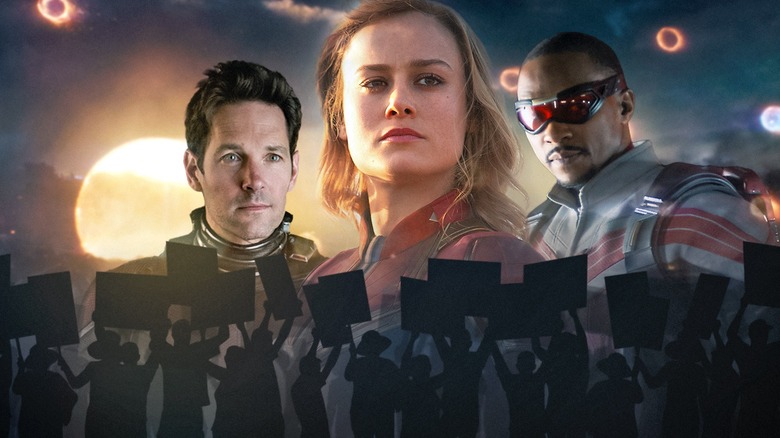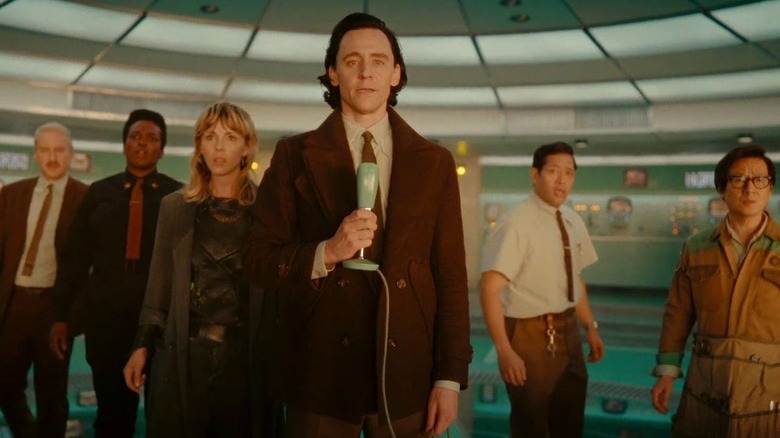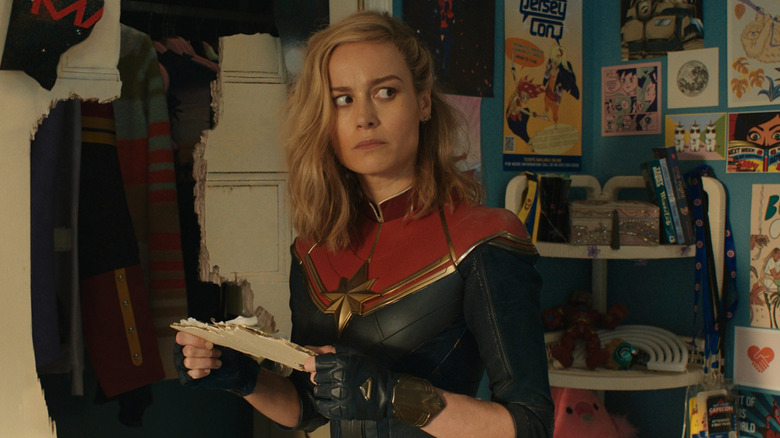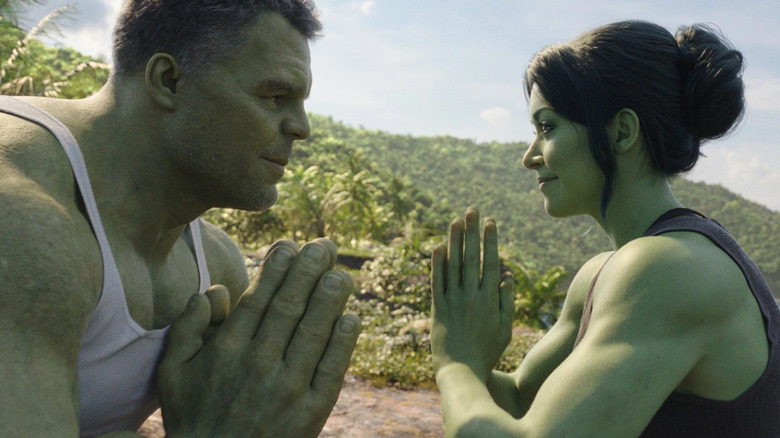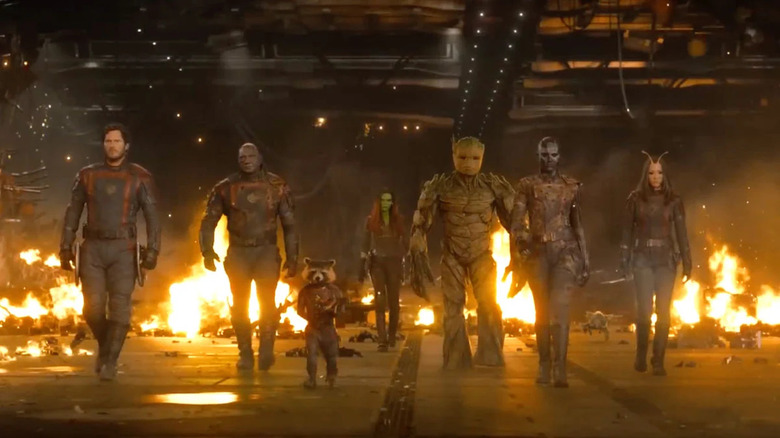Hollywood Strikes Are Saving The MCU & Making Phase 5 Better
Hollywood is on strike. For the first time since the 1960s, a solid chunk of 2023 saw both the SAG-AFTRA (Screen Actors Guild — American Federation of Television and Radio Artists) and WGA (Writers Guild of America) simultaneously opposing "the Man," seeking goals like better compensation, improved working conditions, and protections against the negative potential of AI applications in the movie business. The momentum from the strikes is still mounting, months after the WGA kicked things off back at 12:01 a.m. on May 2, 2023. And even though the WGA And AMPTP have finally reached a deal to end the writers strike, the actors strike still rages on.
Furthermore, buzz continued to build back in early August when it was reported that Marvel's VFX artists were banding together in the hopes of creating a union of their own. On September 13th, that hope became reality when the group became the first of its kind to join the IATSE (International Alliance of Theatrical Stage Employees).
Whatever way things go, the fallout of all of this unionized activity will doubtless have repercussions on the entire film industry. However, there is one area where we're already seeing improvement: the MCU itself.
That's right. In fact, we'll go a step further. It isn't too much to say that the Hollywood strikes aren't just improving the MCU. They're saving it — and we're not just talking about some long-term potential. Rather, the labor resistance in La-La-Land is making the recently launched Phase 5 that much better right now. How, you ask? Let's break it down.
Marvel desperately needed to slow down, and delays are forcing that
Remember the Infinity Saga? Yeah, that epic story arc that spanned three MCU phases and ended with the Thanos double-header? Yeah, yeah, the official end was "Spider-Man: Far From Home," but you get the idea.
Anyways, that gigantic experience lasted a decade, spanning 23 movies with no correlating Disney+ series. In contrast, as of this writing, Phase 5 alone is slated to have seven full-length feature films with seven streaming series. That's more than half of the events in the original three-phase Infinity Saga ... and we're getting them all in three years.
No wonder one of the number one complaints about the MCU is the fact that we're getting too much content, too fast. The good news is that the strikes are naturally extending some of the release dates of the Phase 5 lineup. As early as June, there was already a cascading effect of delays pushing major upcoming films like "Captain America: Brave New World" and "Blade" further down the pike. "Deadpool 3" updates disappeared when the strike froze production. The next pair of major Avengers films were even bumped a year out, way into 2026 and beyond. Don't forget the ripple effect that other studio delays are having on the MCU, too. For instance, the rescheduled release date for "Dune: Part Two" moves Denis Villeneuve's sequel out of its original fall slot, clearing room for an uncontested "The Marvels" release window.
For a very select group of endlessly thirsty Marvelites, this is all bad news. For the hundreds of millions of other mainstream entertainment viewers out there, it's a godsend. The delays mean they have plenty of time to anticipate, enjoy, and process each new installment without immediately pre-purchasing a ticket for the next event.
Shaking up Marvel's writing process is a good thing
Meanwhile, the writer's strike has all but ensured one very good thing: going forward, the writing in the MCU will get better. How is that possible to predict? Because the situation can't get much worse than it already was. When the writers originally went on strike, their demands focused on two key areas. The first and obvious item was pay. The initial WGA proposal was awash with explanations of badly needed pay raises, while the guild reported that screenwriter pay had plummeted 14% in the past five years.
The second related factor was the potential use of AI in the writing process. Writers rooms were already shrinking before AI achieved its most recent generative capabilities. With exponential improvements likely coming down the pike, chances are human writers with important creative contributions were (if the strike hadn't happened) going to be squeezed even further. CNBC reported that before the strike, many writers weren't even allowed to visit the set during filming — or if they did, it was on their own dime.
The WGA's fight for better pay and permissions for its members will, either way, ensure better pay, better treatment, and more respect, as well as allowing writers to be more intimately involved with their projects. That means that future MCU movies and TV shows will give writers the opportunity to execute their craft at a higher level. This translates to better writing, higher quality scripts, and a superior overall final product.
Improved CGI is also a big bonus for the MCU, and unionization will hopefully achieve that
The MCU relies heavily on its CGI. Honestly, all of Disney's IPs do. The entertainment giant is a CGI machine with ever-increasing requirements for computer-generated imagery. It's this nonstop need for computer graphics that led to the comical (though underwhelming) final episode of "She-Hulk" featuring a pointed jab at the exorbitant cost of CGI transformations, with She-Hulk being asked to transform back to Jen Walters specifically to keep the budget down.
On top of the costs, the pandemic created a backlog in the global VFX department that has taken years to unclog. Countless projects were delayed during shutdowns, and it has only exacerbated the pressure on the industry in the wake of the worldwide event.
The news that Marvel's VFX team voted to form a union is a manifestation of the pressure they've been under to perform. As release windows have shrunk, VFX teams, especially at Marvel, have found themselves facing a growing pile of projects that demand gigantic battles, de-aged characters, and fantastical physical forms. Once again, a lack of communication and interaction with on-set bosses and higher-ups has also plagued the VFX team with last-minute changes and a lack of guidance as they went along.
Toss in that all-encompassing threat of AI — which already featured in the title sequence for "Secret Invasion" — and the pushback from the VFX team is well-timed. The intrepid crew overseeing Marvel's CGI may be able to use the development to win back some breathing room and better working conditions through the protection of unionization. If that happens, along with a better workflow from a more spread-out release schedule, chances are that all of the Phase 5 projects will benefit from the change.
As the MCU comes back to life, unions are the real superheroes
From spread-out schedules to on-set writers to better working conditions for VFX crews, there are a lot of positive takeaways from the ongoing strikes in Hollywood. Yes, the short-term may require the relearning of patience from viewers as the windows of time between Marvel projects grow again. But this is nothing new.
Just half a decade ago, the world waited for a year to see what happened after Thanos snapped half of the universe away. It's true that we got two movies in-between those events. But even that release rate pales in comparison to the current deluge of MCU content flowing out of theaters and television screens on a regular basis.
It's also fair to point out that after the Infinity Saga wrapped up with "Spider-Man: Far From Home," we were forced to wait for a long time for new content during the early days of the pandemic. But since then, the fandom has had a gluttonous feast of MCU projects for years. It's time to slow the flow, give Hollywood room to sort out its backroom woes, and let the MCU resume a "slow and steady wins the race" trajectory again. If that can really happen, chances are it might not just be a good thing for the future of the Marvel Cinematic Universe. It could be the unexpected blessing that saves it.
